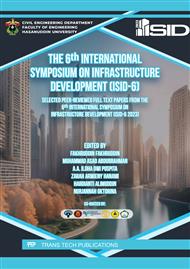p.37
p.47
p.57
p.65
p.75
p.83
p.91
p.99
p.107
The Occurrence of Springs in Scarce Groundwater Condition Area in Taebenu Sub-District, Kupang Regency
Abstract:
The subdistrict of Taebenu in Kupang Regency is classified as an area with low productivity of aquifer, local even scarce groundwater conditions due to its geological condition. This research aims to investigate the occurrence of springs in this region and its correlation to geological conditions. This study was conducted by the method of direct observation of the geological and hydrogeological conditions in the study area. Although groundwater in this study area is scarce, the result of this research reveals the occurrence of at least 13 annual flowing springs that emerged from rocks on a research area of 3.64 Km2. In relation to lithology, one spring occurs in the limestone; six springs occur in the carbonate sandstone; three springs occur in the scaly clay fragmented with exotic blocks; one spring occurs in the contact lithology between carbonate sandstone and scaly clay fragmented with exotic blocks, and the other two springs occur in the alluvium sand sediments. Based on spring occurrence classification, those springs can be classified as follows, ten springs are Contact Springs, and three are Tubular or Fracture Springs. Almost all the springs have less than 1 L/s discharge rate, pH between 6 – 8, and TDS below 500 mg/L and may become a potential source of fresh water for the community in this region.
Info:
Periodical:
Pages:
75-82
Citation:
Online since:
July 2025
Keywords:
Price:
Сopyright:
© 2025 Trans Tech Publications Ltd. All Rights Reserved
Share:
Citation:


